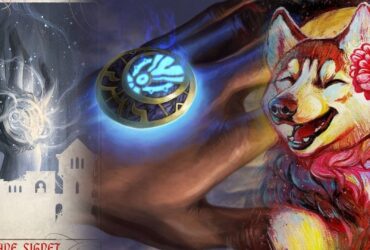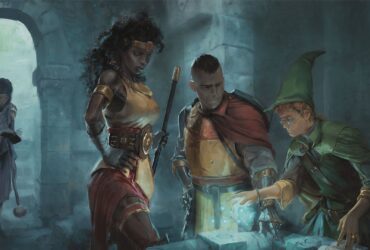At first glance, Beyblade X just looks like a load of spinning tops clattering against each other. That couldn’t be further from the truth, though, as Beyblade is a game full of strategy, as you carefully pick your Beyblades and their types to counter your opponent.

Related
I Can’t Help It, I Want To Eat A Beyblade
I’m ravenous for metal and plastic. Let me eat your Beyblades.
Beyblades are split into one of four categories: Attack, Defense, Stamina, and Balance. Knowing which ones can best deal with others is key to picking your ideal bits and ratchets, and knocking your opponent out.
Attack Beyblades
-
Strong Against
Stamina
-
Weak Against
Defense
As the name suggests, Attack beys are the most aggressive, and aim to win by knocking out or bursting the opposing bey. They often move erratically, and are most able to hit the extreme edge on the side of the arena to dash in for a strike. Because they’re going to be repeatedly colliding with an opponent, Attack types have a high burst resistance.
However, Attack beys lack stamina. If they can’t deal with an opponent quickly, the repeated impacts and use of the extreme edge will often mean they run out of spin. They may even knock themselves out by bouncing into the pockets if they miss their target, making rounds with Attack beyblades very quick.
Experiment with launching Attack beys at an angle, to optimise the chances of hitting your opponent’s ratchet for a burst.
Attack beyblades want to be shorter than average. When building combos, 60mm ratchets let you get low enough to the ground to hit larger, bulkier Defense-type Beyblades. Your bit should also be wider to encourage the circling motion Attack beys need to get to the extreme edge, such as Gear Flat, Flat, Rush, or Low-Flat.
Stamina Beyblades
-
Strong Against
Defense
-
Weak Against
Attack
Stamina beyblades are often considered among the best of Beyblade X. They take the slow approach, aiming to simply spin longer than your opponent.
To do this, Stamina blades will often be larger than average, and have most of their weight distributed on the outer edge. This ensures they maintain their spin for as long as possible, but it also means they struggle when facing an aggressive bey.
During a match, a Stamina bey will sit in the middle of the arena. It won’t be circling for an attack, and will only hit the extreme edge if it’s knocked there. Otherwise, it’ll conserve its energy and remain in the middle, waiting out the opponent.
You’ll often want to launch Stamina beyblades as flat as possible, to ensure there isn’t extra swaying adding drag.
Because of their weakness to Attack types and incredibly low burst resistance, it’s recommended you run a Stamina beyblade with a similarly thin ratchet. You also want a ratchet with either a higher number of points, like a 9-60, or one with very few points at all, like a 1-60, as they burst less easily.
Stamina bits are generally ball-shaped to some degree, to ensure they remain steady in the arena and minimise resistance on the surface. Ball and Orb are good choices, while Disk-Ball is a long-standing favourite thanks to the additional stability provided by the large disc.
Defense Beyblades
-
Strong Against
Attack
-
Weak Against
Stamina
Defense beys aim to win by tanking hits. While a Stamina beyblade will win by simply existing longer than its opponent, a Defense bey absorbs damage, sapping the opponents’ spin each time they connect.
Defense beyblades are generally much taller than the others, with 70mm and 80mm ratchets being the norm. Though this height does mean they have a low burst resistance, it also allows them to more easily self-correct when knocked out of alignment.
The bits for Defense beyblades are narrow points, as this gives them the freedom to move when contact is made. Needle, Spike, Gear-Needle, and Dot all seee play, though you’ll often find Defense builds make use of Balance bits too, like Hexa.
Unfortunately, of the four types, Defense is often considered the weakest. They struggle with the massively popular Stamina beys, and their low burst resistance is antithetical to what you’d expect of a Defense build. This means you don’t often see Defene builds do well at higher-level competitive play.
Balance Beyblades
-
Strong Against
None
-
Weak Against
None
Balance is to Beyblade what Normal is to Pokemon: the pure baseline. Balance beys will have some combination of aspects from all three other types. Perhaps it will have the stability of a Defense build and the spin of a Stamina, or hit as hard as an Attack but the height of a Defense.
However, Balance beys all tend to share a few similarities: they have a high burst resistance, and will behave differently depending on how they hit the opponent. If they’re hit, they can bounce back like a Defense-type, but they’re also more than capable of being aggressive, like an Attack bey.
This makes Balance beys difficult to place competitively. Often they struggle to carve out their own niche, especially when put against Attack or Stamina. However, Balance parts are also some of the most sought-after, such as the Hexa bit that is an all-star in Stamina builds, or Elevate that has almost single-handedly made left-spinning beys viable












Leave a Reply